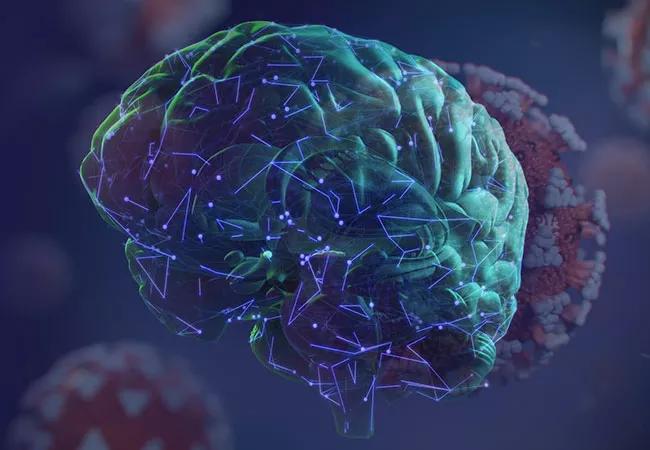Making the most of our evolving understanding of how the conditions intersect

No robust data yet exist on the presentation, course and outcome of COVID-19 in patients with Parkinson disease (PD) or other movement disorders. But the latest issue of Parkinsonism and Related Disorders features a trio of reports from around the world that underscore the impact the COVID-19 pandemic may have on these patients and how they are cared for. While the reports suggest that COVID-19 symptoms may be easily misperceived as worsening PD, these publications likewise share what two experts in the field describe as hopeful signs that “data sharing, creativity, and resiliency” are being embraced as adaptive solutions to the pandemic’s distinct challenges in this population.
Advertisement
Cleveland Clinic is a non-profit academic medical center. Advertising on our site helps support our mission. We do not endorse non-Cleveland Clinic products or services. Policy
The experts are Elena Moro, MD, of the Grenoble Institute of Neurosciences, and Hubert H. Fernandez, MD, Director of the Center for Neurological Restoration at Cleveland Clinic and co-editor-in-chief of Parkinsonism and Related Disorders. They express their views in an editorial, “Adaptive Neurology in COVID-19 Times,” that accompanies the three reports.
The first report is from two physicians in France who profile the cases of two elderly patients with longstanding PD treated with subthalamic deep brain stimulation. Both patients developed COVID-19 with what the authors describe as “misleading presentations” that were difficult to distinguish from rapid worsening of PD motor symptoms. This contributed to delayed diagnosis of COVID-19 and poor outcomes, with both patients dying shortly after developing acute respiratory distress syndrome a few days after hospitalization.
“These case reports…stress the need for a registry to collect data regarding the impact of COVID-19, along with outcomes, in patients with movement disorders,” Drs. Moro and Fernandez write.
A second report is from a team of Italian clinicians who describe their implementation of a two-step telemedicine model structured to efficiently triage the care of patients with PD during the severe pandemic surge in northern Italy. The first step of their model involves telephone triage of PD patients by PD nurse specialists to determine patients’ needs and address their questions and problems remotely when possible, reducing demand for in-person care on an overburdened health system. The second step is reserved for patients who require additional assessment by a neurologist, who conducts a subsequent evaluation by virtual visit. This model, Drs. Moro and Fernandez note, shows promise for efficiently maintaining needed access to subspecialist expertise while protecting both patients and clinicians from exposure to the virus.
Advertisement
The final report is from two clinicians in India who share a sizeable collection of web- and app-based tools and platforms that movement disorder patients can use at home to maintain mobility, exercise and enhance their quality of life in spite of lockdowns and social distancing.
In their editorial, Drs. Moro and Fernandez acknowledge that the pandemic-induced challenges of maintaining regular visits with neurologists and therapists have worsened the conditions of many patients with PD, dystonia, Huntington disease and tics. They cite these challenges as the reason for an urgent need for novel approaches to care. They also note that resources and degrees of preparedness will vary among — and even within — nations, observing that the pre-pandemic use of telemedicine was more advanced in the U.S. and Canada, for example, than in Italy. For instance, the editorial notes that Cleveland Clinic’s Neurological Institute had completed over 5,500 virtual visits over a four-year period ending more than a year prior to the pandemic, which prepared it to deploy telemedicine more broadly and effectively when the pandemic hit.
The editorialists conclude that differences like this make nimbleness one of the most important attributes movement disorder specialists can embrace in response to COVID-19. They write: “‘Adaptive neurology’ has emerged as our most effective ammunition against an invisible enemy. It is a new and enduring mindset that we can no longer afford to lose, even beyond this crisis.”
Advertisement
The full editorial is available here.
Advertisement
Advertisement

Patients report improved sense of smell and taste

Clinicians who are accustomed to uncertainty can do well by patients

Unique skin changes can occur after infection or vaccine

Cleveland Clinic analysis suggests that obtaining care for the virus might reveal a previously undiagnosed condition

As the pandemic evolves, rheumatologists must continue to be mindful of most vulnerable patients

Early results suggest positive outcomes from COVID-19 PrEP treatment

Could the virus have caused the condition or triggered previously undiagnosed disease?

Five categories of cutaneous abnormalities are associated with COVID-19